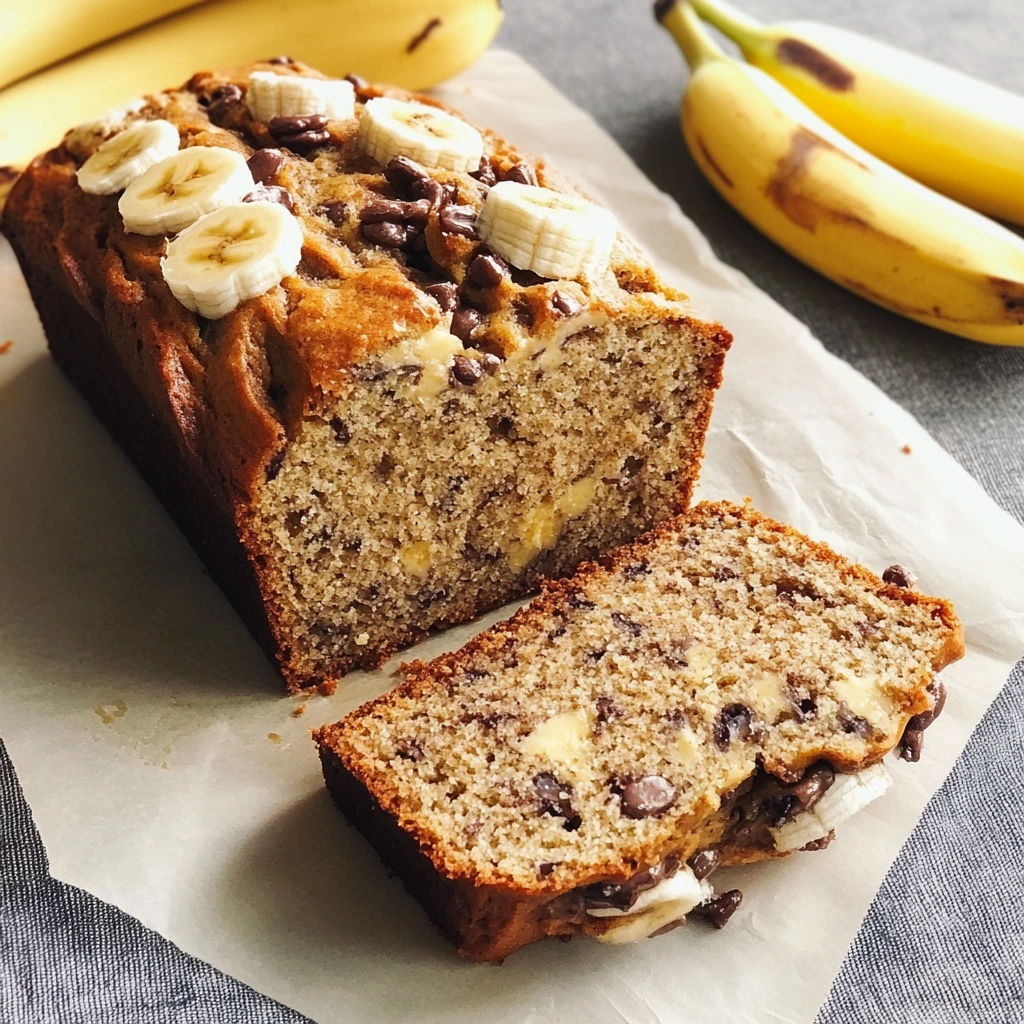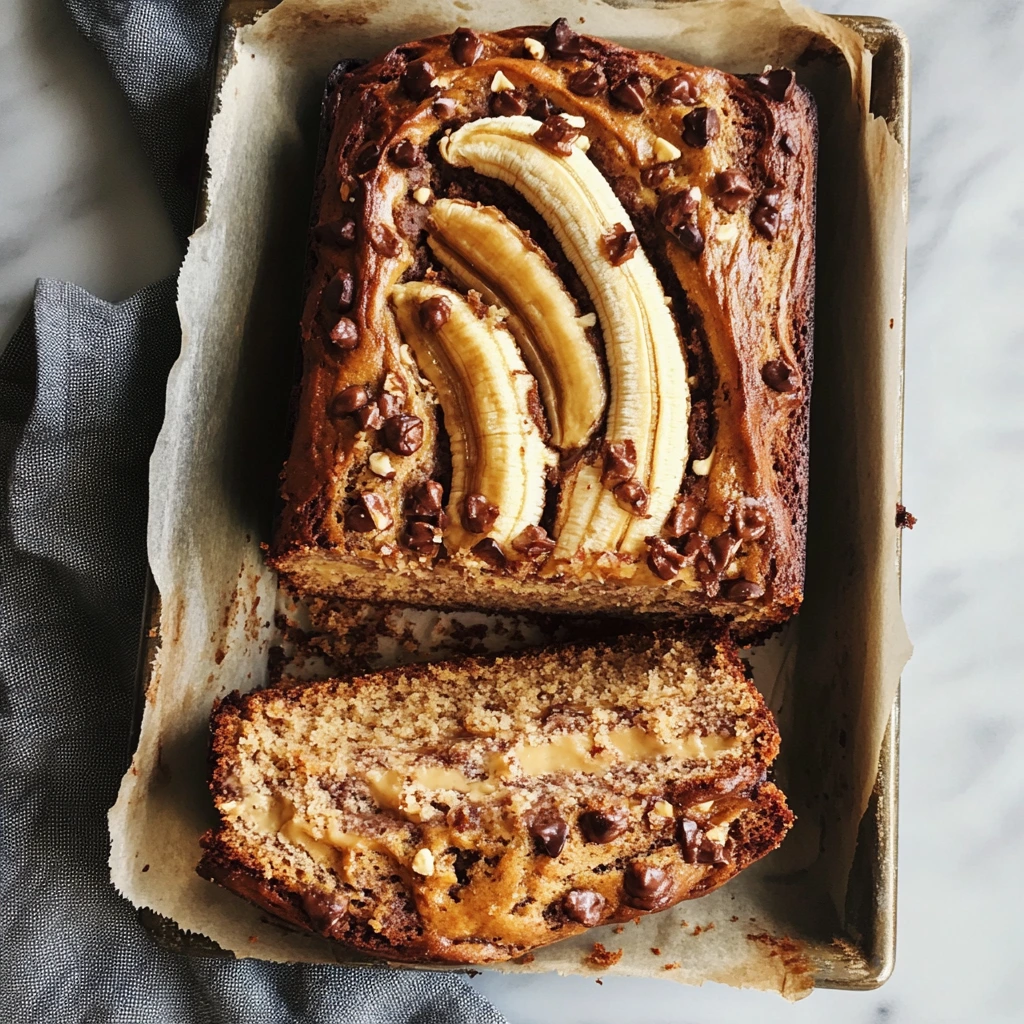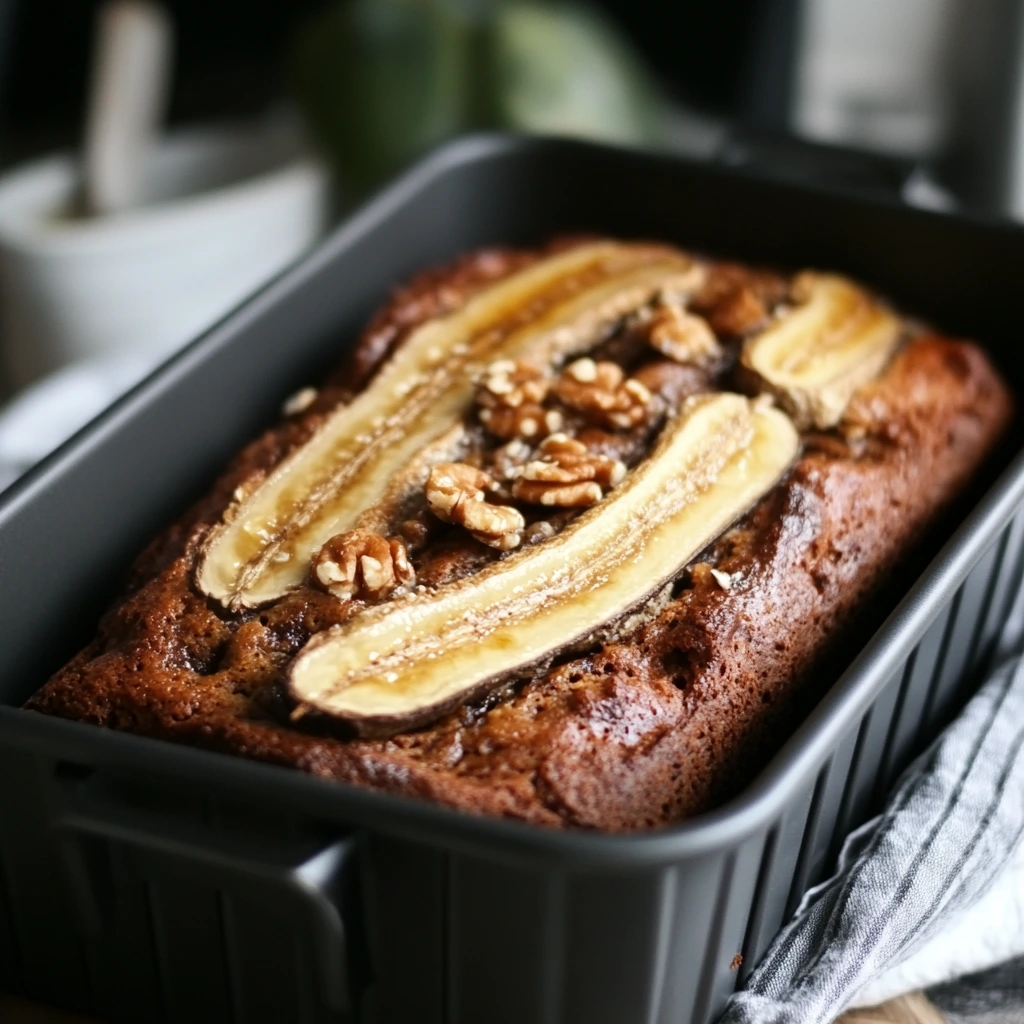Why Everyone Loves Banana Bread
Banana bread is more than just a simple baked treat—it’s a warm, comforting classic that has stood the test of time. Whether you enjoy it for breakfast, as a snack, or even as a dessert, this moist and flavorful loaf never fails to satisfy. What makes banana bread so irresistible is its versatility; you can keep it traditional or get creative with add-ins like chocolate chips, nuts, or spices.
But let’s be honest—perfecting banana bread isn’t always easy. From dense textures to uneven baking, there are common pitfalls that can leave you frustrated in the kitchen. That’s why we’ve compiled 5 secret tips to help you bake the most delicious banana bread every time. With these tricks, you’ll turn simple ingredients like ripe bananas, flour, and butter into a loaf that’s moist, fluffy, and bursting with flavor. Ready to elevate your banana bread game? Let’s dive in!

The Basics of Banana Bread: Ingredients and Preparation
Why Ripe Bananas Are Key
Ripe bananas are essential for perfect banana bread because they’re sweeter, softer, and more flavorful. As bananas ripen, their starches convert into sugars, creating the natural sweetness and rich banana flavor that defines this classic treat. Their soft texture also blends seamlessly into the batter, ensuring a moist and tender loaf.
The best bananas for baking have brown spots or fully browned peels and feel soft to the touch. If yours aren’t ripe enough, speed up the process by placing them in a paper bag or baking them at 300°F for 15-20 minutes. Overripe bananas can even be frozen and thawed for future use. With the right bananas, you’ll elevate your bread to the next level of deliciousness!
Choosing the Right Ingredients
The ingredients you use can make or break your banana bread. Here’s what you need to know:
- Ripe Bananas: Overripe bananas with brown spots are best for sweetness and moisture.
- Flour: All-purpose flour works well, but whole wheat or gluten-free blends are great alternatives.
- Sweeteners: Brown sugar adds moisture and depth, while natural options like honey or maple syrup can be used for a healthier twist.
- Fats: Butter offers a rich flavor, while oil ensures a moist, lighter texture.
- Leavening Agents: Fresh baking soda (and sometimes baking powder) helps your bread rise and stay fluffy.
- Add-Ins: Enhance flavor with chocolate chips, nuts, or spices like cinnamon and vanilla.
The Perfect Mixing Technique
Getting the mixing right is key to fluffy, moist banana bread.
- Mix Wet Ingredients First: Mash ripe bananas and combine with eggs, sugar, butter (or oil), and vanilla until smooth.
- Prepare Dry Ingredients Separately: Whisk flour, baking soda, salt, and spices in another bowl to ensure even distribution.
- Gently Combine: Fold the dry ingredients into the wet mixture using a spatula. Mix just until combined—overmixing can make the bread dense.
- Add Mix-Ins: Fold in extras like nuts or chocolate chips gently to distribute them evenly.
- Avoid Overmixing: Stop as soon as the batter is combined; lumps are okay.
This gentle approach ensures tender, perfectly textured banana bread every time!

5 Secret Tips for Baking Banana Bread Like a Pro
Measure Your Ingredients Precisely
Accuracy in measuring ingredients is essential for perfect banana bread.
- Use the Right Tools: Use dry measuring cups for flour and sugar, and liquid measuring cups for wet ingredients.
- Flour Measurement: Spoon flour into the cup and level it off with a knife—don’t scoop directly, as it compacts the flour.
- Leavening Agents: Measure baking soda and baking powder carefully; even small inaccuracies can affect rising.
- Liquid Accuracy: Check liquid measurements at eye level to avoid adding too much or too little.
- Optional: Weigh Ingredients: A kitchen scale ensures precision and consistency for foolproof results.
Don’t Skip the Resting Time
1. Why Resting the Batter Matters
Explain how resting allows ingredients to combine, flour to hydrate, and flavors to meld.
2. How Long Should You Rest the Batter?
Recommend resting the batter for 10-15 minutes at room temperature for the best results.
3. Benefits of Resting the Batter
Highlight the improved texture, better rise, and enhanced flavor that come from resting.
Enhance the Flavor with Add-Ins
Take your banana bread to the next level with creative add-ins!
- Nuts: Add crunch with walnuts, pecans, or almonds. Toast them first for extra flavor.
- Chocolate Chips: Semi-sweet, dark, or even white chocolate adds sweetness to every bite.
- Dried Fruits: Raisins, cranberries, or chopped dates add natural sweetness and chewiness.
- Spices: Cinnamon, nutmeg, or ginger bring warmth and depth.
- Seeds: Chia, flax, or sunflower seeds add crunch and nutrition.
- Coconut: Shredded coconut offers a tropical twist, especially when toasted.
- Flavor Boosters: Try vanilla, almond extract, or citrus zest for a fresh kick.
Fold add-ins gently into the batter, keeping total extras to 1-1½ cups for the best results. Customize and enjoy a flavor-packed loaf!

Common Mistakes to Avoid When Making Banana Bread
Overmixing the Batter
Overmixing your banana bread batter can lead to a dense, tough loaf. Mixing activates gluten in the flour, which is good in small amounts but overworking it makes the bread chewy instead of tender.
How to Avoid Overmixing
Add mix-ins like nuts or chocolate chips at the end, folding them in lightly.
Mix wet and dry ingredients separately before combining.
Gently fold the wet and dry ingredients together using a spatula. Stop as soon as they’re just combined—lumps are fine!
Not Adjusting for Oven Temperature
1. Why Accurate Oven Temperature Matters
Discuss the impact of incorrect oven temperature on banana bread texture, rise, and doneness.
2. How to Check Your Oven’s Temperature
Explain using an oven thermometer and the importance of preheating properly.
3. Tips for Adjusting Oven Temperature
Provide actionable tips, like reducing temperature for dark pans or covering the loaf with foil if it browns too quickly.
4. Common Signs of Temperature Issues
Highlight signs like a raw center, overly browned crust, or uneven rising to help identify problems.
Skipping the Toothpick Test
The toothpick test is a simple, crucial step to ensure your banana bread is fully baked. Skipping it can leave you with a raw center or an overbaked loaf.
How to Perform the Test
- Insert a toothpick into the center of the loaf.
- If it comes out clean or with a few moist crumbs, the bread is done.
- If it comes out with wet batter, bake for another 5-10 minutes and test again.
Tips for Perfect Results
Check Early: Start testing 5-10 minutes before the recommended bake time ends.
Tent with Foil: If the top browns too quickly, cover it loosely to prevent burning while the inside finishes baking.
Storing and Serving Your Perfect Banana Bread
How to Keep Banana Bread Moist
1. Start with Moisture-Rich Ingredients
Explain how ripe bananas, brown sugar, and oil contribute to the bread’s moisture.
2. Avoid Overbaking
Highlight the importance of the toothpick test and setting the right oven temperature to prevent dryness.
3. Proper Cooling Techniques
Discuss how cooling the bread properly on a wire rack helps retain moisture.
4. Storing Banana Bread Correctly
Cover wrapping, storing at room temperature, and the best ways to prevent it from drying out.
5. Freezing to Lock in Freshness
Explain how freezing the bread helps preserve its texture and moisture over time.
Serving Suggestions
Banana bread is versatile and can be enjoyed in many ways. Here are some ideas:
- Drinks: Pair with coffee, tea, or a cold glass of milk for the perfect combo.
- Classic: Enjoy a slice warm or at room temperature with coffee, tea, or milk.
- With Spreads: Add butter, cream cheese, peanut butter, or Nutella for extra flavor.
- Toasted: Toast a slice for a crispy exterior and serve with jam or honey.
- Dessert Twist: Top with whipped cream, ice cream, or a drizzle of chocolate or caramel.
- Fresh Fruits: Pair with berries, sliced bananas, or citrus for a refreshing touch.
- Breakfast Pairings: Serve with yogurt, eggs, or turn it into a French toast.
Freezing Banana Bread for Later
Freezing banana bread is an excellent way to keep it fresh for up to 3 months. Follow these simple steps:
- Cool Completely: Let the bread cool fully to prevent freezer burn.
- Wrap Properly: Wrap the whole loaf or slices tightly in plastic wrap, then place in a freezer-safe bag or container.
- Label It: Add a date to track storage time.
Thawing and Reheating
Reheat: Warm in a 300°F (150°C) oven for a freshly baked feel.
Whole Loaf: Thaw at room temperature for a few hours.
Slices: Thaw in 20-30 minutes or warm in the microwave for 10-15 seconds.

Banana bread is a timeless favorite that’s easy to make, versatile, and endlessly satisfying. By following these tips—using ripe bananas, measuring ingredients precisely, avoiding overmixing, and mastering baking techniques—you can create a moist, flavorful loaf every time. Whether you enjoy it fresh out of the oven, frozen for later, or with your favorite toppings, banana bread is a treat that never disappoints. So grab those overripe bananas, get baking, and enjoy the comforting aroma and taste of homemade banana bread!

